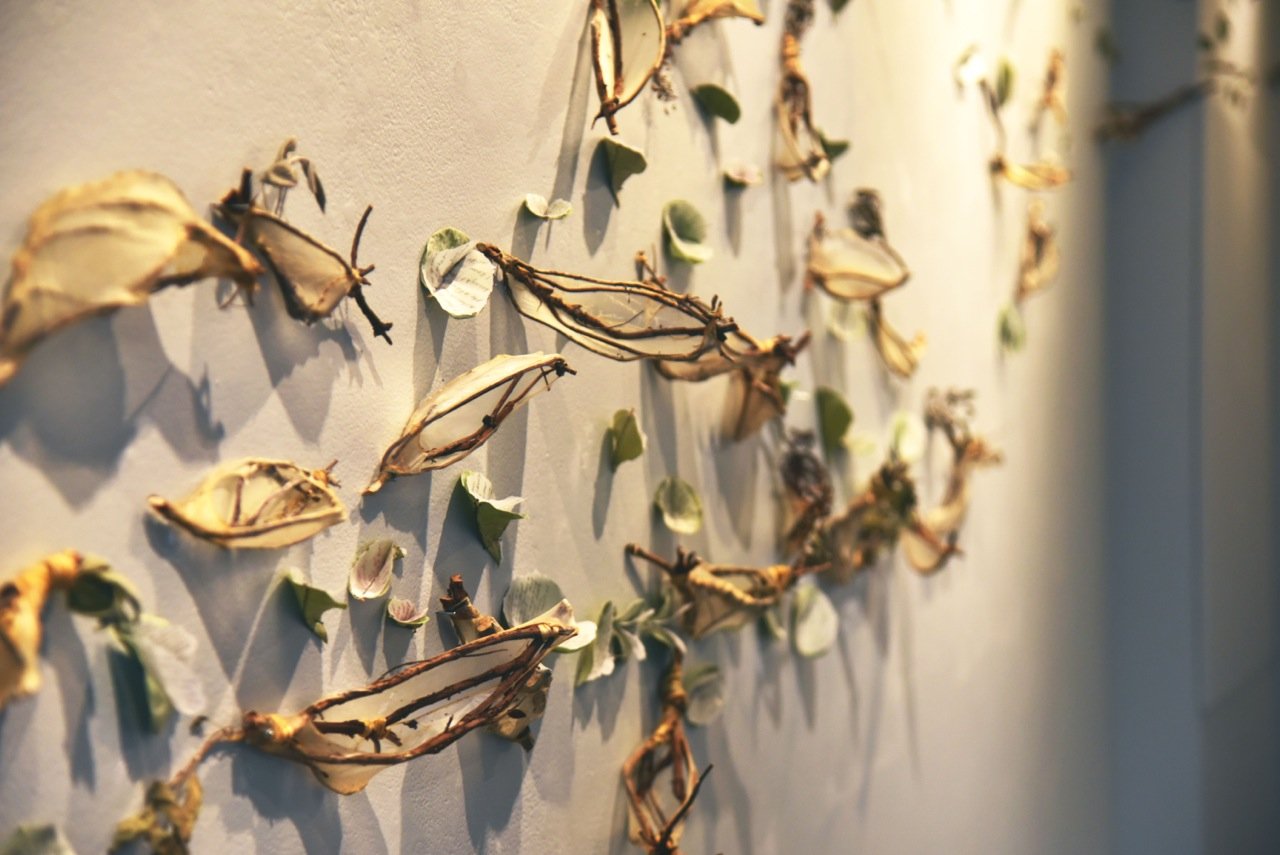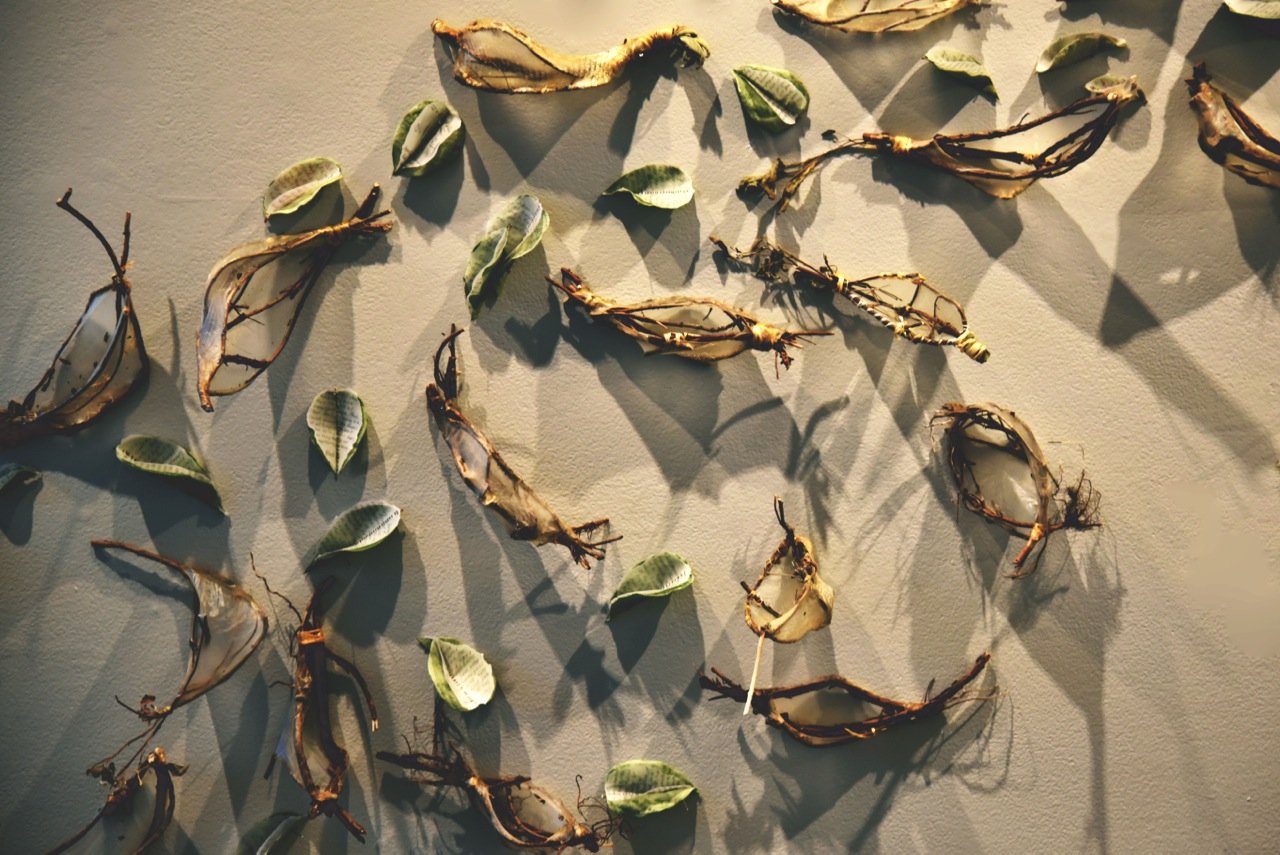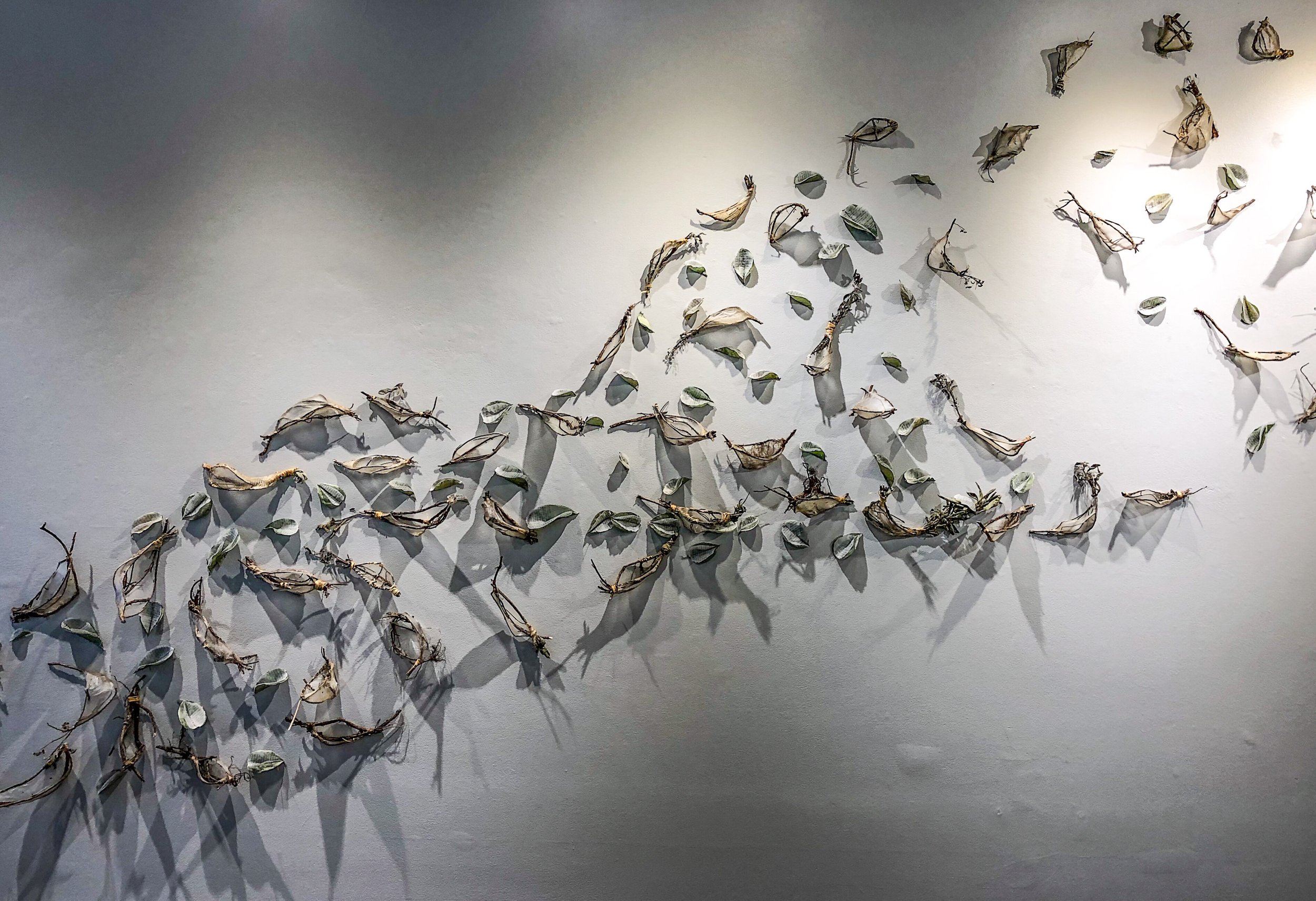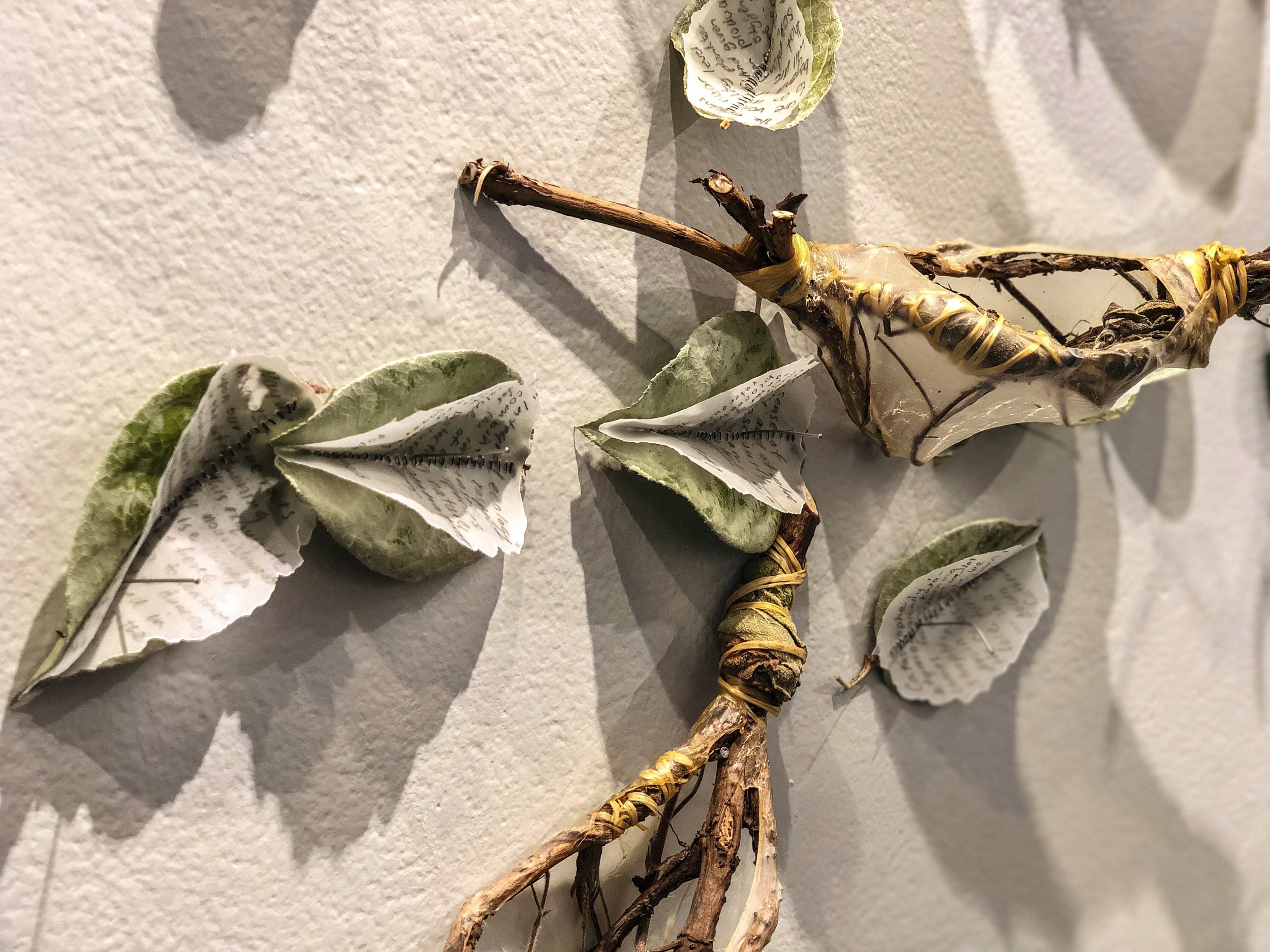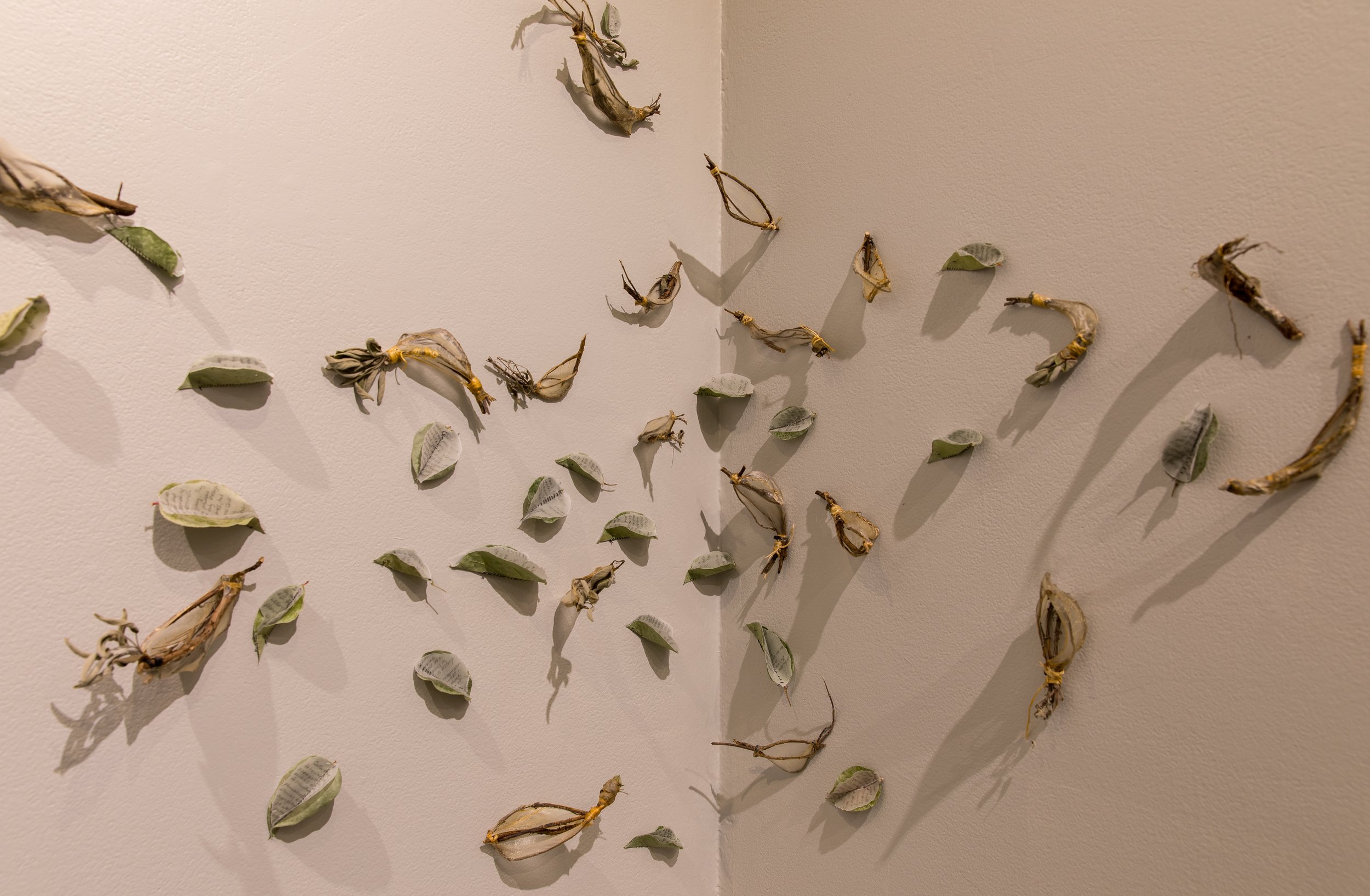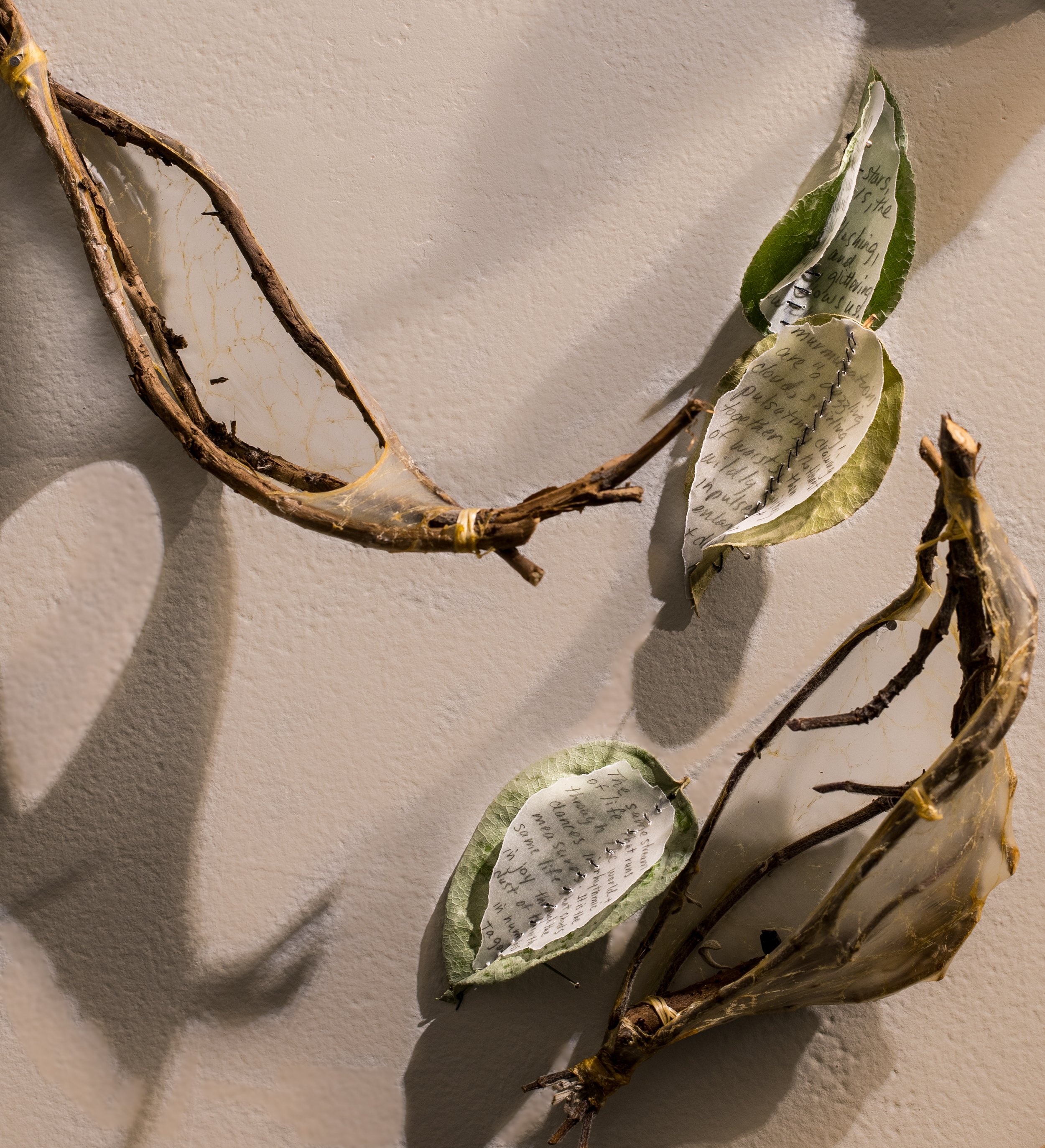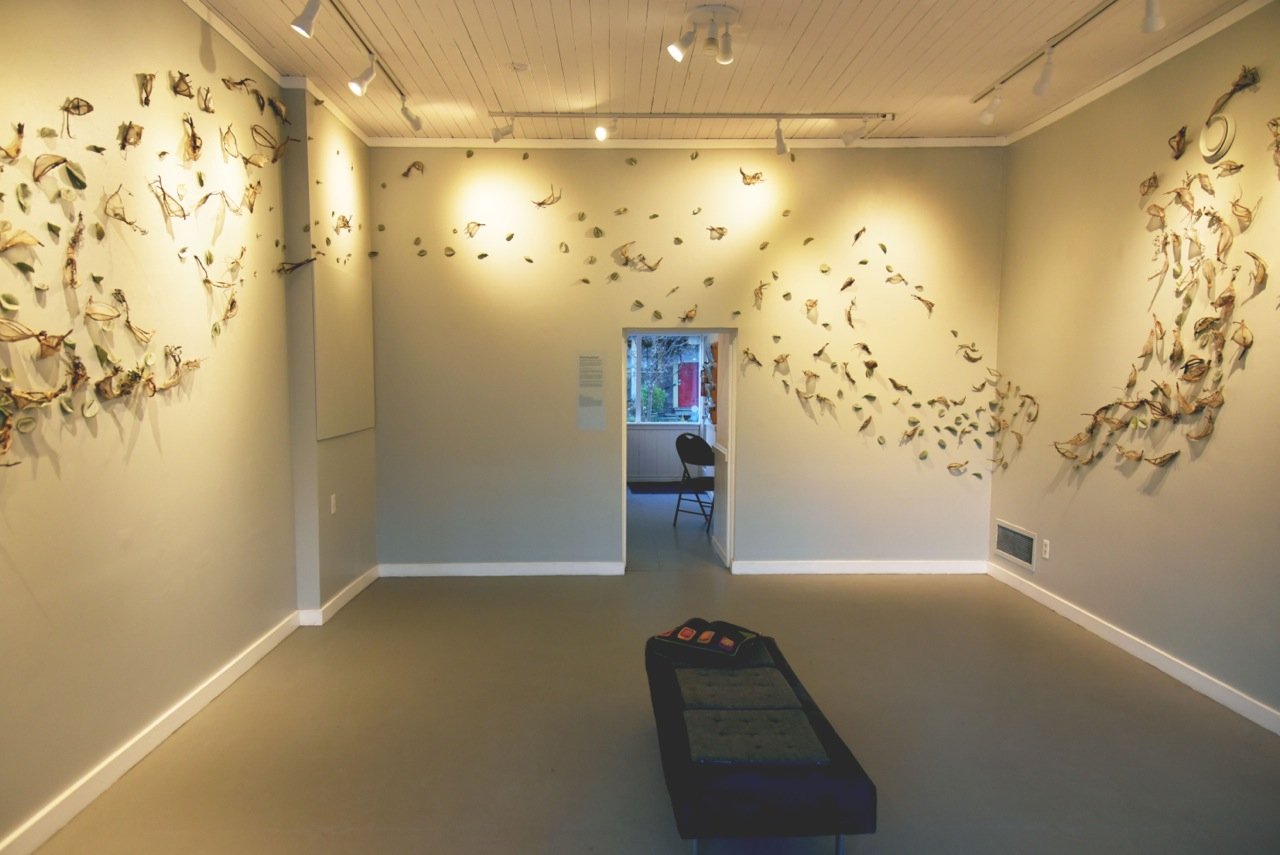Murmuration
Cryptic, boat-like forms murmurate through a gallery space in this collaborative installation by Erica Grimm and Zuzana Vasko, with assistance from Emily Arnett. Composer Jocelyn Morlock’s piece Solace gives voice to the work.
Murmuration patterns are best known from the flocks of thousands of starlings who move synchronously, swiftly, and gracefully into ever changing complex patterns that swirl, pulsate, draw together to the thinnest of traces, then wildly twist, widen and fold. Astonishingly, murmurations have no leader, being an example of a self-organizing or emergent system.
Yet this murmuration is made of tiny boat-like forms made from branches and leaves. Coracles are an ancient type of bent branch boat, constructed all over the globe. These hand-held sculptural coracles are woven with sage branches and skinned with hog gut. The salal leaf boats are bound with notes of cryptic text. Both address the complexity and fragility of life on a planet in the midst of a changing system.
The notes sewn into salal leaves quote a wide range of writers who address inter-species commonalities–both physical and experiential–in light of climate change. These tiny objects intertwine human communication, lore and wisdom with the more-than-human life forms with whom we share a dependency on earth’s elements. The entangled, boat-like forms imply a shared journey. By layering embodiment and environmental metaphors, and hinting at the sentience of material itself, we invite viewers to imagine what the earth would whisper to us if we had ears to hear. What if we were to cultivate a new intimacy with other forms of life on earth? What would this intimacy reveal to us?
It is this yearning for intimacy with the earth that composer Jocelyn Morlock perfectly conveys in her piece Solace. It calls to mind an inter-species conversation between an avian voice (violin) and a heartfelt human one (cello) that is at once delicate, profound, tender and fragile.
Salal leaves, thread, pencil on velum, sage branches, sinew and hog gut, dimensions variable
